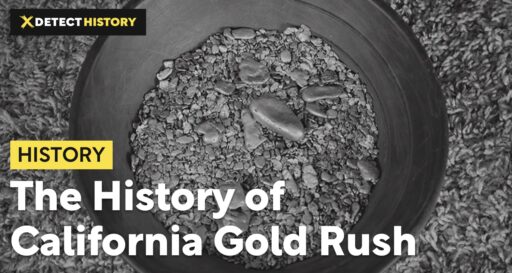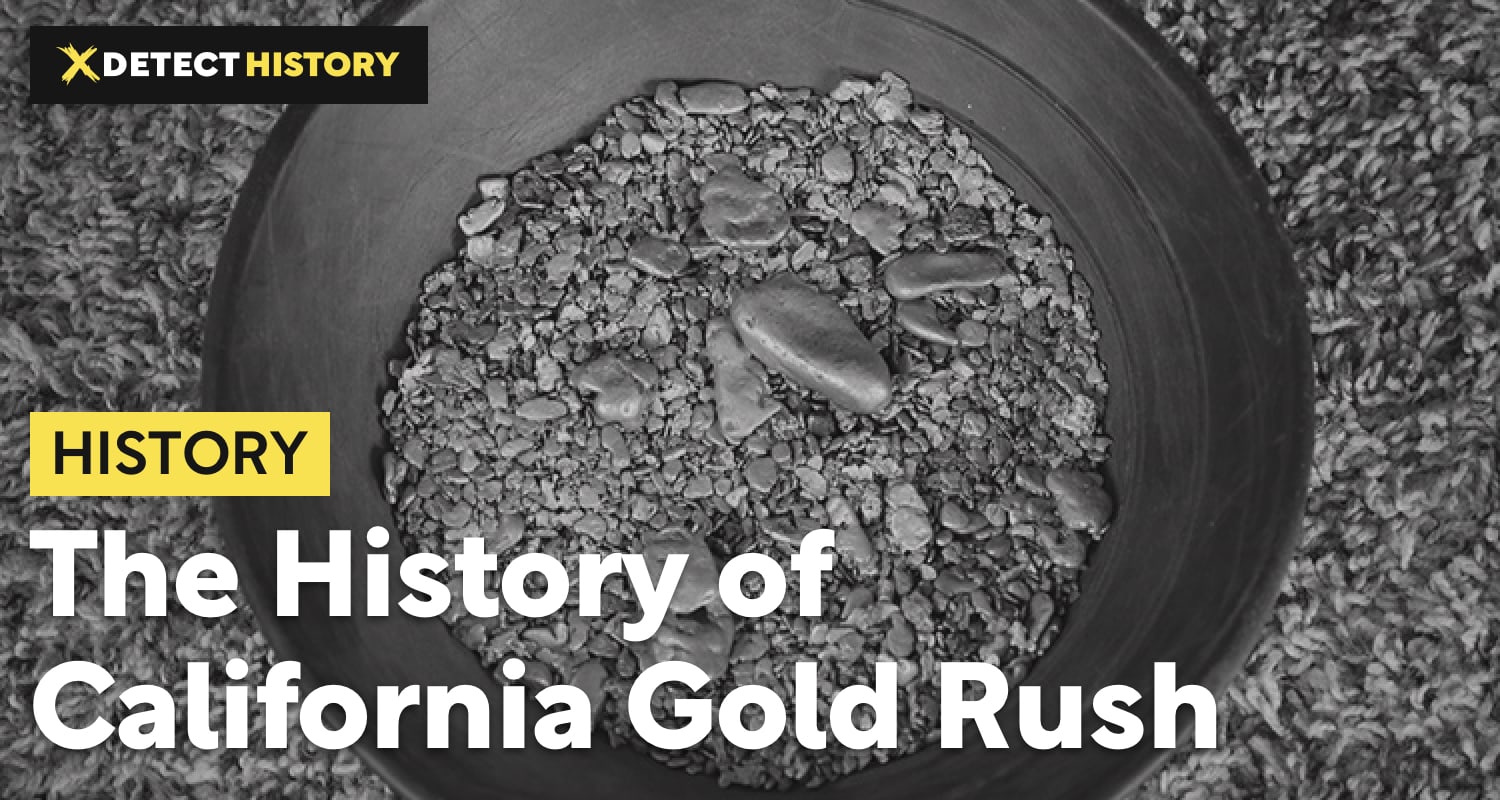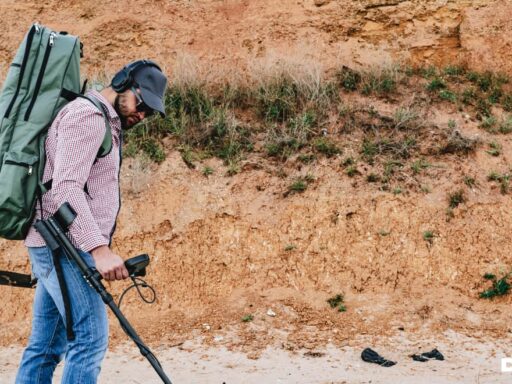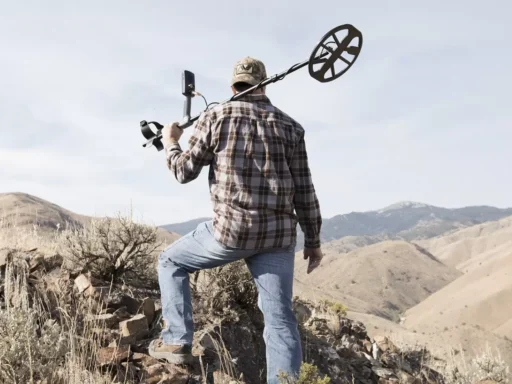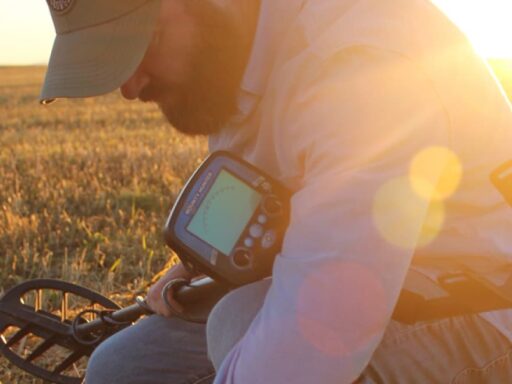What was the California Gold Rush? California Gold Rush is the name of a historical period from 1848 to approximately 1860, when gold was discovered in California, and thousands of people rushed to the area in hopes of getting rich quickly. The California Gold Rush 1849 is one of the several Gold Rushes that took place in the US and Canada. The Gold Rush in this state (considering that California was not even a state when the Rush began) stimulated fast development of economics and technologies, and caused considerable social and demographic changes. However, there were also numerous downsides, including damage to the environment, destroyed landscapes, impacted Native Americans, brutal and lawless actions of some miners, and so on.
[lwptoc]
Why is California Gold Rush History Interesting for Contemporary Gold Prospectors?
Gold Rush California history may be interesting for modern treasure hunters and gold prospectors for several reasons. Firstly, this was a unique time in history and economics that had impressive and long-term effects. Secondly, this period was marked by rapidly changing and developing technologies for mining, prospecting, transportation, and so on. Thirdly, modern prospecting laws in California were invented, and the first attempts were made to shape the legislation, exactly during the Gold Rush period, because there were no laws on prospecting, private property, staking claims, or rights of ownership at the time. And eventually, California is still a place where gold can be found with the help of modern, advanced metal detectors for gold, so contemporary prospectors may be interested in exact locations of old gold bearing fields or creeks.
When Was the California Gold Rush?
When did the California Gold Rush start? The California Gold Rush 1848 took place from 1848 to around the 1860s, when the amount of gold mined started to decrease rapidly. The peak of the Rush was reached in 1852, when a massive amount of gold in flakes, nuggets, and ore veins was mined in the area, and when the biggest numbers of people were engaged in the industry. By the end of the decade, only the most successful mines continued to produce gold, while most smaller businesses and individual prospectors were left with little more than they started with 10 years earlier. According to the estimates, around 300,000 wannabe prospectors travelled to California during the Rush, but only few businessmen made a fortune there, after all the efforts.
How Much Gold Was Found in the California Gold Rush?
According to modern estimations, the prospectors retrieved over 750,000 pounds of pure gold during the period of the Gold Rush. At the beginning, mostly panning technology was used to get the gold. However, even with panning, by 1850, most of the surface gold was already extracted, because way too many people panned gold on every creek. In 1853, a new technique of mining called hydraulic mining was invented. It destroyed much of the landscape, but allowed to extract deeper deposits of gold, and brought huge profits. Yet, already by the end of the decade, even deeper deposits were mostly exhausted, with few exclusions. During these years, around $2,5 billion worth of gold was mined.
How Long Did the California Gold Rush Last?
Roughly speaking, the Gold Rush in California lasted for 12 years. On the background of US history, this period seems tiny, but it had some profound effects on demography, development of technology and transportation, on building new towns, etc. Of course, after 1860 when the Gold Rush declined, gold mining continued, because it was the Rush itself that declined, and prospectors from all over the world stopped coming to the state in hopes of quick riches. Most prospectors hired for wages instead of claiming stakes individually, and the industry continued to develop.
California Gold Rush Map
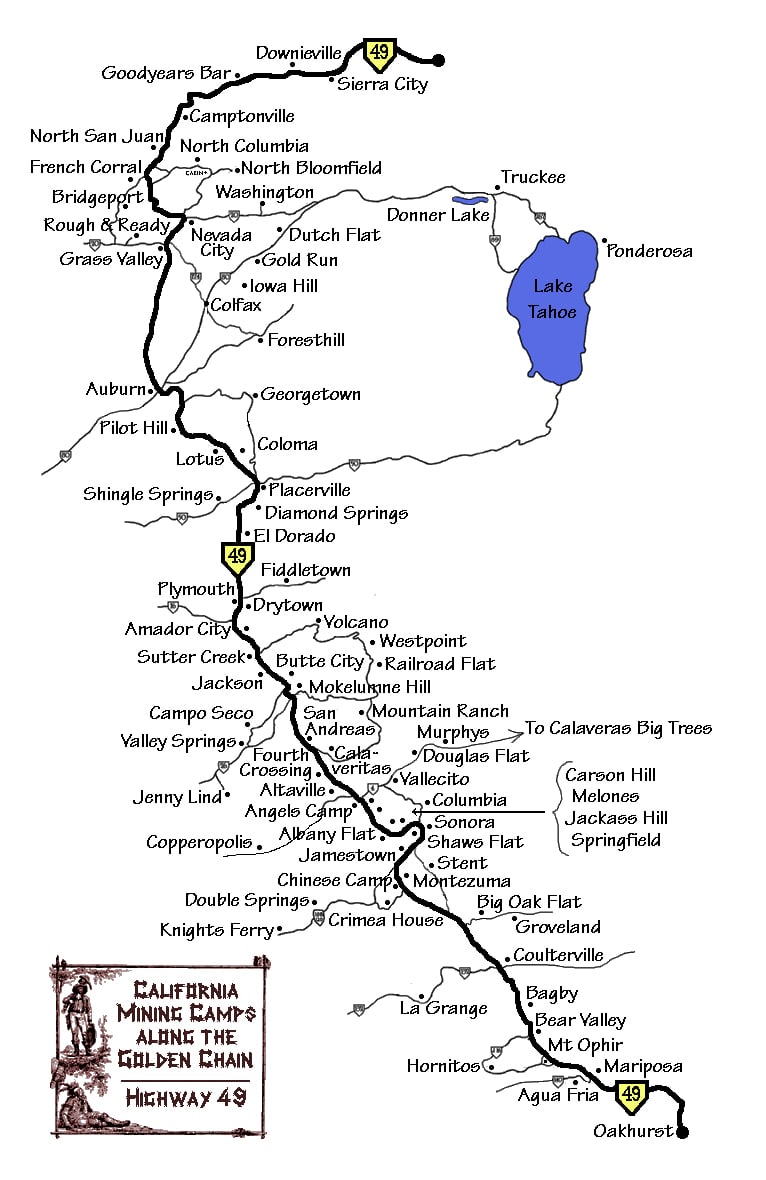
The map shows the general area where gold prospecting took place during the Gold Rush. However, there were several main points that attracted most attention, including:
- Sutter’s Mill/Coloma – gold nuggets spotted in the mill raceway
- Mormon Island – gold found in the American River several miles up from the Sutter’s Mill
- Bidwell’s Bar – several miles north from Sutter’s Mill, the area was spotted which was incredibly rich with gold
- Weber’s Creek – this creek was full of gold, as one claim brought around $600 worth of gold in one week
- Murphy’s – location in Sierras that brought up to $40 million (in 2021 money) in one year
- Mariposa – this was land belonging to John Fremont, on the southern edge of the huge Californian gold field
- Rich Bar – at the northern edge of the gold field, three German miners discovered a location incredibly rich in gold, bringing them around $500 million (in today’s money)
- Comstock Lode – this place was discovered by the end of the Gold Rush, and it was a huge deposit of silver; partially due to the discovery of silver in Comstock Lode, the price of gold dropped almost twice, and the Rush started to fold.
California Gold Rush Timeline
Considering the tight schedule of the Gold Rush in California that only took 12 years from start to end, it is interesting to look at the general California Gold Rush time line of the events:
- Jan 24, 1848 – gold discovered at John Sutter’s mill
- Feb 2, 1848 – according to the Treaty of Guadalupe Hidalgo, which ended the Mexican-American war, California becomes the US territory, but no one is yet aware that it will bring gold to the country
- Mar 15, 1848 – discovery of gold is reported by a newspaper in San Francisco
- Apr 1, 1848 – Eastern states get information about gold in California, although the news were a bit exaggerated
- May 12, 1848 – San Francisco citizens watch a merchant running along the streets showing gold and yelling that gold was discovered in the river
- May 12, 1848 – May 20, 1848 – almost all men from San Francisco travel to the goldfields
- May 12, 1848 – Jul 6, 1848 – store selling picks, pans, and shovels, makes huge money
- Jul 1, 1848 – white landowners start exploiting Natives for gold mining
- Aug 19, 1848 – The New York Herald is the first to officially announce gold in California for the eastern population
- Nov 28, 1848 – San Francisco sends the very first ship full of gold, to the United States Mint
- Dec 5, 1848 – in his speech to the Congress, President confirms the discovery of gold. Thousands of people migrate to California hoping to get rich
- Dec 20, 1849 – the very first immigrants from China arrive in San Francisco
- Apr 1, 1849 – over 30,000 aspiring prospectors gather in Missouri; they wait for the weather to stabilize and the soils to harden, to enable travelling overland
- Jun 1, 1849 – more prospectors arrive in San Francisco by ship
- Dec 30, 1849 – during year 1849, over 90,000 migrants, nick-named as “Forty-Niners”, arrived to California, 97% of them were men
- Sep 1, 1849 – due to fast development, California requests statehood
- Dec 19, 1849 – the population of San Francisco grew from 1,000 at the time when gold was discovered, to over 30,000
- Sep 1, 1850 – California becomes a state
- Dec 1, 1850 – mining technology gets advanced and improved
- Apr 1, 1850 – the government applies tax to foreign miners
- 1851-1852 – over 20,000 Chinese arrive to San Francisco
- May 1, 1852 – the government starts applying tax to California Gold Rush Chinese miners
- Mar 1, 1853 – hydraulic mining method is invented
- 1855 – the Gold Rush starts to decline
California Gold Rush Miners
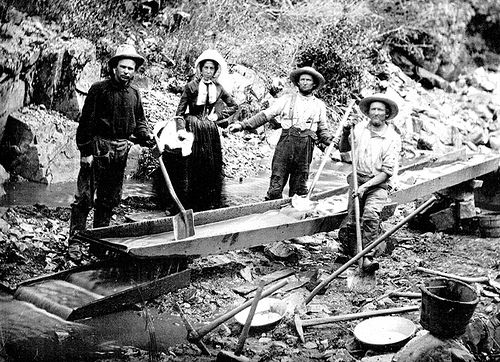
When the Gold Rush began, thousands of men around the country and abroad sold or mortgaged their houses, spent their savings, or borrowed money from relatives or banks, and headed to California in hopes of claiming a stake at a gold bearing creek and getting rich. Most of them were white; local landowners who spotted gold on their lands actually hired white, Mexicans, and native Americans to dig for wages. Sometimes, women accompanied men, or travelled separately as individual prospectors hiring people to work for them, but in most cases, women were left at home to manage farms and businesses. Other prospectors coming to the area were from China, Europe, South America.
Some famous prospectors and miners associated with the Gold Rush of California were William D. Bradshaw, Daniel Govan, John Wesley Hillman, James Marshall, John Howell Sears, Elijah Steele, and George Treat.
What Equipment Did Gold Miners Use During the California Gold Rush

Gold-recovery techniques and equipment were really very primitive at the times of the Gold Rush. Mostly the prospectors used panning to wash the gold from the dirt, and for bigger scales, they just used bigger variations of the gold pans. They used to sift the dirt through chutes of all kinds – cradle boxes, rockers boxes, and long-toms. If the watercourse was deep, but rich in gold, the miners used to dig a sluice along the river and divert water from the river, to get a dry riverbed available for primitive digging. On land, they would dig shallow shafts and then make tunnels to all sides to reach the gold bearing veins.
Later, hydraulic mining was invented; the method used high-pressure water jets to wash the rocks away and dig deeper into the deposits of ore. Another technique, if we may call it so, was “hard-rock” mining; the concept behind the technique was to blast the rocks and remove gold directly from the rocks containing it. These mining techniques were extremely brutal, and even by the end of the 20th century, California still bore some traces of hydraulic mining and hard-rock mining.
California Gold Rush Towns
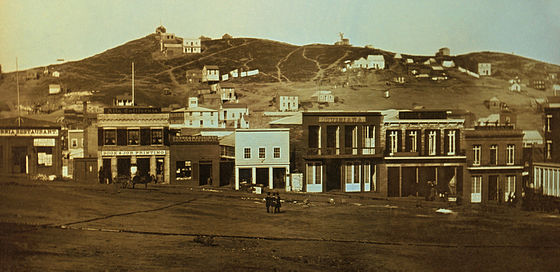
When the Forty-Niners started to arrive, California started to create accomodations for them and all the migrants, because migrants needed services and had to pay money for these. Therefore, gold mining towns and camps were founded all around the state, building shops, hotels, saloons, casinos, and other establishments. However, due to general chaos, lack of laws, and lack of regulations, these towns and camps were violent and uncontrolled places. Bigger cities like San Francisco managed to keep comparative order, but overall, the state went crazy, as the population skyrocketed. Some gold mining towns were eventually abandoned, and became California Gold Rush ghost towns, but many other towns still exist. These include Murphys, Sutter Creek, Nevada City, Placerville, Pollock Pines, Eureka, Diamond Springs, Mariposa, Oro Fino, Silver Mountain, Rich Bar, and others.
California Gold Rush Facts
The Gold Rush was a comparatively short, but powerful period in the history of the state, and in US history, because it altered so many things. The changes brought by the Gold Rush touched upon literally everything, from landscape and environment, to development of towns and transportation and technologies, to the very demographics of the local citizens.
How Did the Gold Rush Affect California Indians?
The Gold Rush in general had a heavy impact on all Native American tribes – then called Indians – living in California. Firstly, heavy mining damaged the fish and game habitat, and since many tribes relied on traditional hunting, fishing, and gathering, the Indians suddenly faced the situation when they were starving. Mining camps were established right in the middle of the wild areas where Indians used to gather plant foods; moreover, heavy mining poisoned the water bodies, so many tribes suffered both hunger and different diseases caused by dirty water.
Indians and miners had violent conflicts taking place here and there, but where Indians killed one man, the white settlers could attack the whole village, often not connected to the initial conflict at all. According to some historians, at the time of the biggest conflicts, miners could kill up to 50 Natives in one day. Women and children were not an exception.
While before the Gold Rush, Natives lived in areas nearby white Californians, the Gold Rush brought many migrants who needed land, and locals wanted more land, as well. Since there were no laws as such about private property or the right of ownership, miners could simply push the Indian tribes off their lands. Some Indians were taken as slaves; Sutter was one of the prospectors who enslaved Indians and forced them to work on his land.
As a result of this violent era, from 9,000 to 16,000 (according to different sources) Native Americans were massacred in California during the Gold Rush.
What Effect Did the California Gold Rush Have on Mexican Californians?
Since only six days after the gold was first discovered on Sutton Creek, California became part of the US due to the Treaty of Guadalupe Hidalgo, one of the natural and immediate effects on the Mexican Californians was that many of them chose to leave the area in order to live under the Mexican law. However, many Mexican people also stayed, and literally weeks later, took active part in the Gold Rush. Most of them hired as diggers, baggage men, etc., and helped those prospectors who could pay money. As the number of migrants grew, Mexicans assimilated even more, and they have definitely seen the least negative impact of the Gold Rush compared to other non-white prospectors.
Chinese Coming To California During the Gold Rush
One of the reasons for the massive migration of Chinese to the US during the Gold Rush was not the desire specifically for gold; obviously staking a claim was already pretty hard even if you were not a foreigner. Two main reasons why Chinese migrated were, firstly, the land of opportunities opening in front of their small businesses in the times of the Gold Rush, and secondly, simplified procedures and regulations of migration when the whole world seemed to rush to the US. Eventually, most of the Chinese who came to California during the Gold Rush, prospectors and businessmen, had to face high taxes from the government, and fight for their place in the sun, but for many, their plan worked out.
What Happened At the End of the California Gold Rush?
The Gold Rush started to decline due to a bunch of reasons. The very first one was, of course, the fact that gold started to exhaust due to previous years of extensive mining by thousands of people. The second reason was that more and more prospectors started to employ for wages, and the Rush turned into a regulated industry. Thirdly, by the end of the decade, the government started applying relevant taxes not only to native miners, but to the foreigners as well, causing significant loss of foreign miners in the area. Also, laws on claim staking, private property and ownership rights were developed at last, making it impossible to take promising lands by violence.
Effects of the California Gold Rush
The Gold Rush had many immediate effects on the whole region. Firstly, the rapid increase of the population stimulated the development of trade and local businesses. New towns started to appear, local companies started to provide transportation services for people and goods, and the previously scarcely populated region turned into the heart of action. Together with commerce, the local government was also forced to develop, in order to manage registration and regulation of huge numbers of migrants, businesses, profits, claims, and so on. At the same time, demographics started to change rapidly, driving out Native Americans and Mexical locals, while prospectors from all states and from abroad continued to come.
World economics was stimulated by the Gold Rush, too: firstly, the US started to use the gold discovered and mined; secondly, farmers from nearby noticed an impressive increase in demand for their products. Manufacturers made clothes, tools and household items to meet the needs of mining camps and new towns.
What Was the Impact of the California Gold Rush?
One of the quick effects that had a long-term impact on the state and the whole country was the opening of the First Transcontinental Railroad in Sacramento in 1863. Due to the Gold Rush, California turned from a rundown territory nearly transferred to the US from Mexico into a thriving state full of business and employment opportunities, and remained like that for many years.
Other long-term effects were the stimulation of equipment manufacturing, and generally manufacturing in the state. Despite the fact that many landscapes were completely destroyed by hydraulic mining and hard-rock mining, and many watercourses were contaminated, agriculture was also boosted by the increased needs in food. The Californian climate was very favourable for farming, and both locals and newcomers wanted to take advantage of that for their farming businesses. Besides food, wine was also in huge demand. Moreover, imports from other countries were organized to provide fruit, sugar, and other specific products.
California Gold Rush Books
The California Gold Rush has been widely represented in literature. Some of the most well-known books and novels include:
- The Celebrated Jumping Frog of Calaveras County
- A Millionaire of Rough-and-Ready
- The Apple Dumpling Gang
- By the Great Horn Spoon!
- Heyday
- The Luck of Roaring Camp
- Life Amongst the Modocs
- Redeeming Love
California Gold Rush Summary
The Gold Rush had an incredible impact on California and the US. Today, this state is still one of the gold-bearing lands. Some mines work as part of the industry, but most prospecting takes place due to individual prospectors and even recreational gold panning tours organized by many tourist companies. Most of the time, the gold nuggets and flakes are spotted with the hold of metal detectors for gold, or simply with the help of patience and panning.
No permit is needed for low-impact gold panning in California, especially within the recreational activities. More intrusive activities like dredging, sluicing, suction dredging and dry washing are also largely allowed, but a permit is needed from the Department of Fish and Game. Other rules are as follows:
- camping with fires requires a permit
- camping is limited to 14 days within any 30 day period, and to 28 days within a year
- only hand tools are allowed
- water must not be pumped from watercourses, and watercourses cannot be contaminated
- existing mining claims must be respected by other miners
There are many places in California today to go for recreational gold panning, individual prospecting, and even for larger-scale mining. The popular places include:
- Marshall Gold Discovery State Historic Park
- Malakoff Diggins State Park
- Tahoe National Forest
- Millerton Lake State Recreation Area
- Red Rock Canyon State Park
- Happy Camp, Siskiyou Wilderness
- Grass Valley and Nevada City
- Roaring Camp Mining Co., Pine Grove
You can also check out the following rivers for panning:
- Kern River
- Santa Maria
- San Gabriel
- San Diego
- Colorado River
- Yuba River
- Cosumnes
- Tuolumne
- San Joaquin
- Mokelumne
- Calaveras
- Stanislaus
Many companies offer recreational tours for families, including Roaring Camp Mining Co., Gold Prospecting Adventures, Go Calaveras, etc. This is a good option for hobby prospecting, or for just giving it a try with panning or even metal detecting on the gold fields. While the great Gold Rush in California is over, the gold is still there, and everyone can have a chance.
